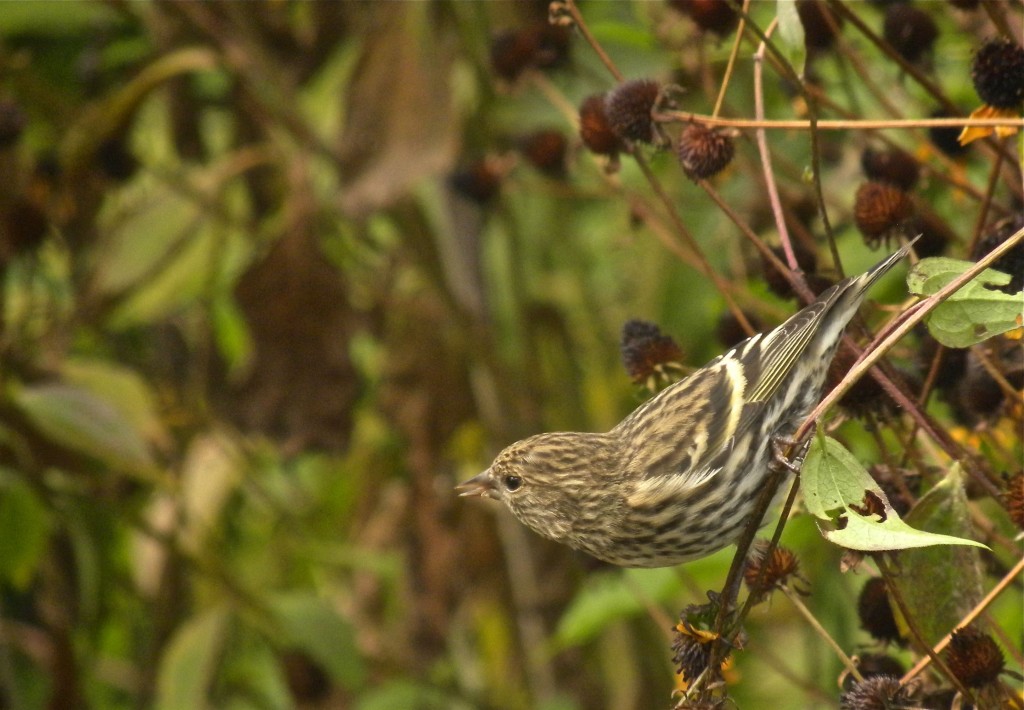October 12 2012. Ruthven Park, Cayuga ON. It was just about a year ago (November 9th. actually) that I wrote about a brief encounter with Pine Siskins in my back yard. That was about my only sighting of siskins last winter. They are generally a northern bird that moves south somewhat irregularly and in varying numbers each winter, so it was some hopeful anticipation that I read a day or two ago of a sizeable incursion of Pine Siskins moving down the Atlantic seaboard.
Today I returned my familiar haunts at the bird observatoryand was soon rewarded with the sight of half a dozen Pine Siskins at a feeder just outside the banding lab window. They are on the delicate side for finches, their bills are slim and pointed and well suited to their preferred food of small seeds. They have bright yellow flight feathers which are usually visible (although only just in my photo below). Today I was quite taken by a couple of individuals with really broad and quite vividly coloured yellow on both the wing and upper tail, unfortunately I didn’t get a photo of either of them.

Apart from the Pine Siskins it was a busy day at the observatory. It was bright but blustery and masses of White–throated Sparrows and a few White–crowned Sparrows were feeding in sheltered leafy corners. A beautiful full adult plumage Bald Eagle soared in circles beneath a cumulus ceiling and a Sharp–shinned Hawk, a few Red–tailed Hawks and an Osprey rounded out the raptor collection.
I conducted my customary daily census and was pleased to find a very late Philadelphia Vireo feeding among many Golden–crowned and Ruby–Crowned Kinglets. Either of the Philadelphia Vireo or a single Orange–crowned Warbler might arguably have been my Bird of the Day, but I really got more pleasure from the Pine Siskins.
Finally, a puzzle of physics: I arrived well before sunrise, the sky was clear and the moon and Venus still shining brightly, there was some dampness on the grass and the air temperature was 4 degrees C., Half an hour or so later as the sun rose the temperature dropped and a light frost formed. Why would that be?